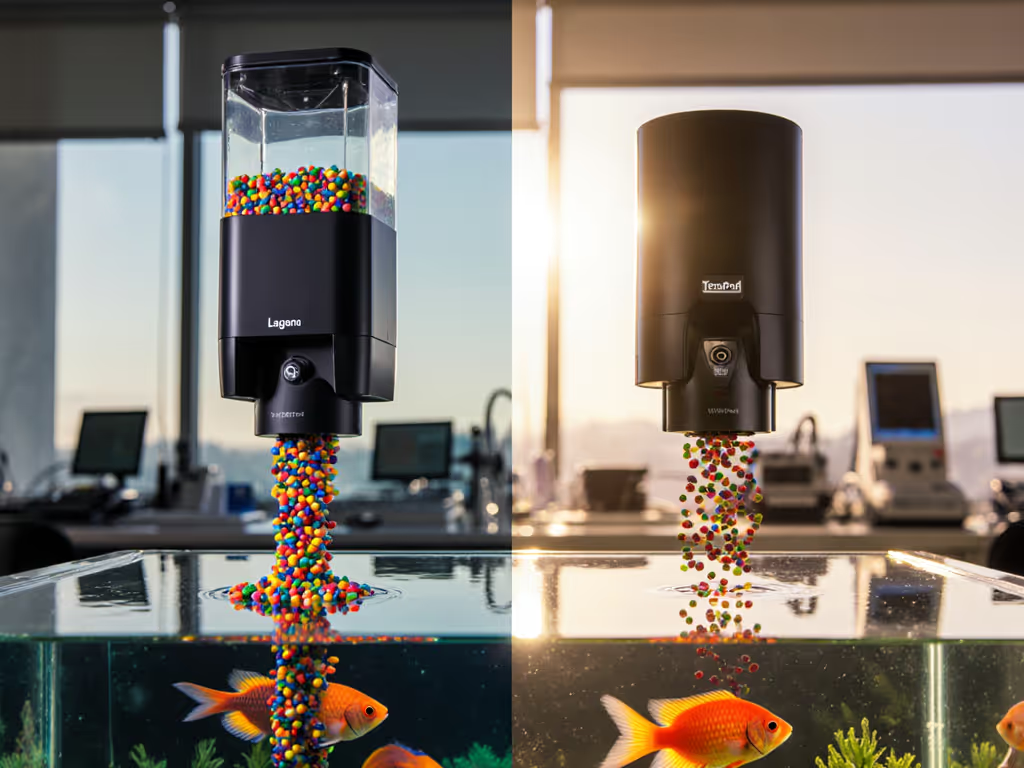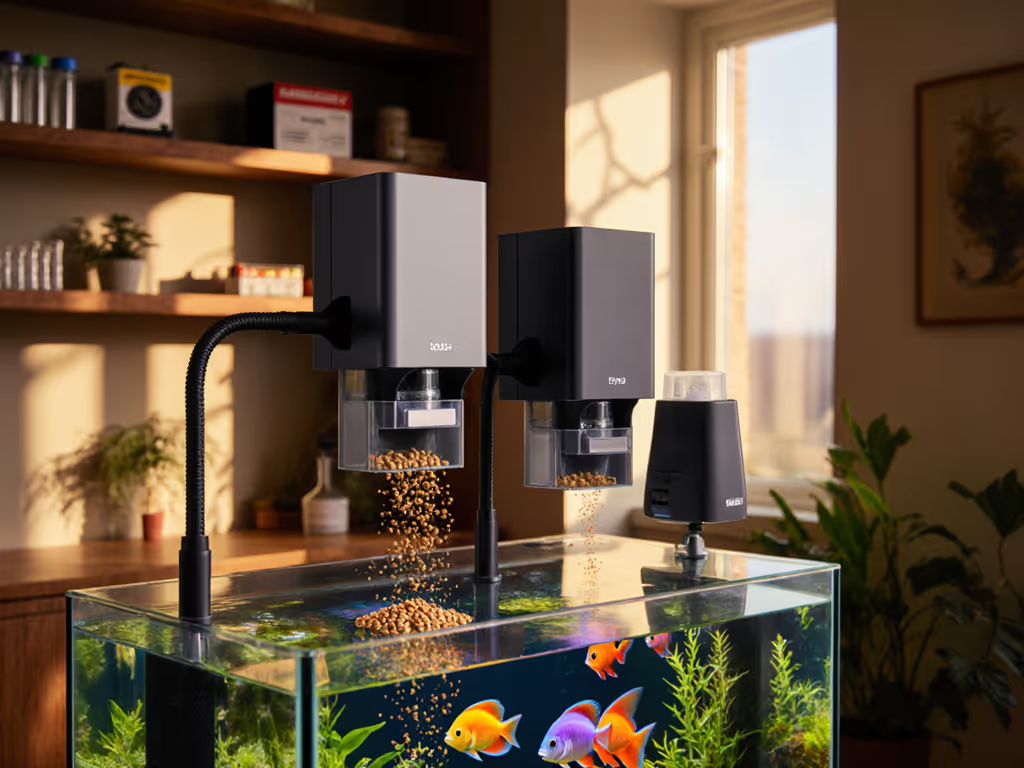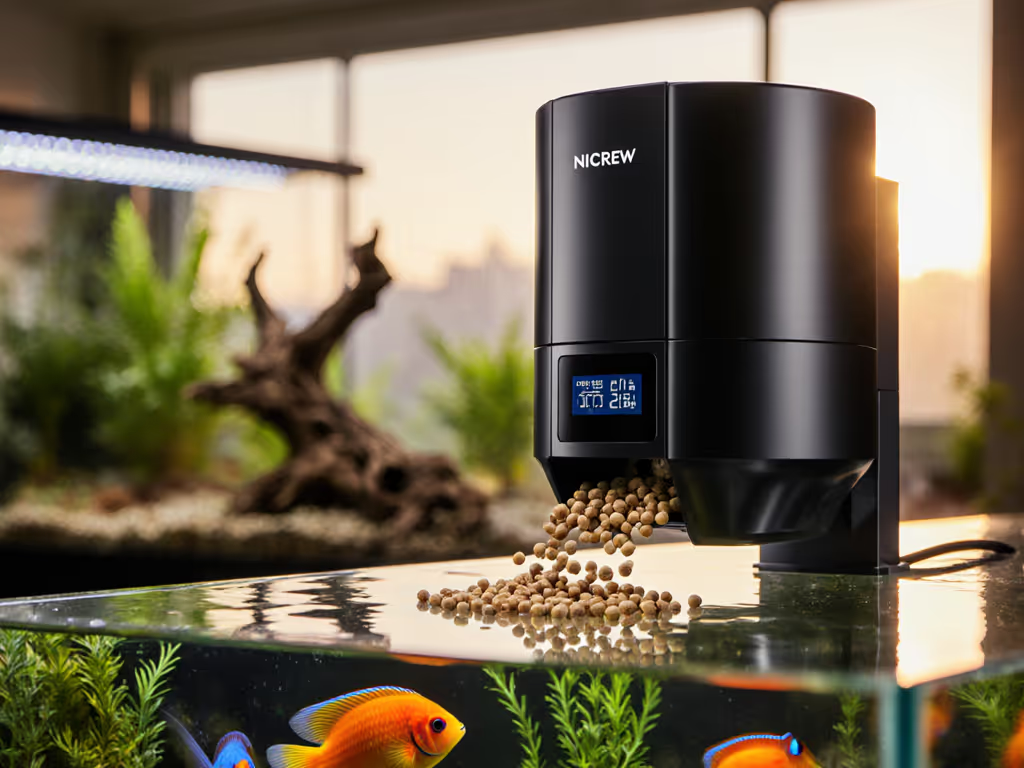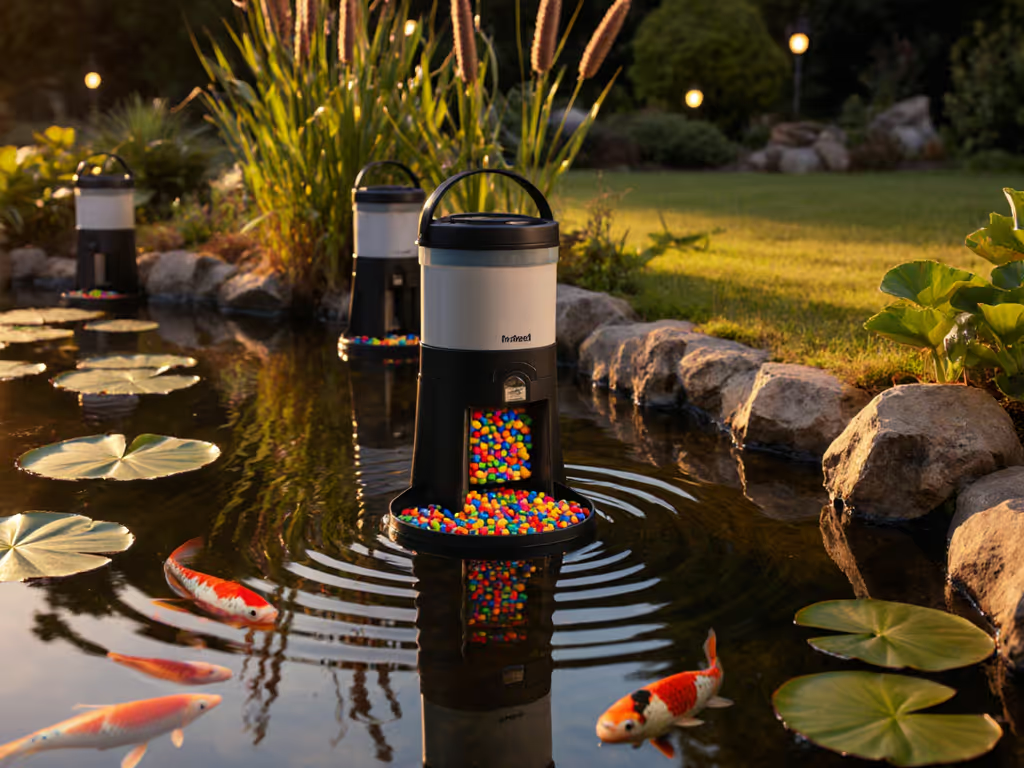
Multi-Tank Aquarium Feeders Compared: Reliable Schedules, Healthy Fish

As an aquarist managing multiple tanks, you've likely wondered: "How can I maintain consistent, healthy feeding routines across all my ecosystems without burning out?" An automatic fish feeder for tank setups isn't just a luxury, it's a cornerstone of responsible stewardship. When thoughtfully chosen, an aquarium feeder transforms chaotic schedules into harmonious rhythms, keeping your fish vibrant and your water crystal clear. Today, we'll cut through the noise to find the right solution for your multi-tank reality.
Why This Matters More Than You Think
Many experienced keepers I mentor arrive stressed, explaining: "My tetras in Tank 1 are listless, but the cichlids in Tank 2 are aggressive, they're clearly overfed or underfed, but I'm tied to my desk job." Inconsistent feeding isn't just inconvenient; it triggers cascading problems: algae blooms from excess nutrients, stunted growth from undereating, or even fish fatalities. For the biology behind this, see our science-backed feeding guide connecting schedules, portions, and water quality. The solution lies in coordinated feeding schedules that honor each tank's unique needs without demanding constant manual oversight.
Pause, watch, then adjust. This isn't passive advice (it's the heartbeat of sustainable aquarium care).
The Hidden Cost of "Good Intentions"
I recall a neighbor's child sobbing when her guppy tank turned milky, she'd loved them too much with extra flakes. That moment taught us all that restraint builds trust. Automated feeders, when calibrated correctly, prevent such emotional and ecological crises. They're not about replacing your role but refining it: freeing you to observe subtle cues (like a shrimp's foraging rhythm or a tang's grazing style) rather than racing against the clock with a food jar.
FAQ Deep Dive: Your Multi-Tank Feeder Questions, Answered
Q: How do multi-tank feeders actually improve fish health beyond convenience?
A: Consistency is everything. Fish thrive on predictable rhythms, not sporadic "feast or famine" cycles. A well-matched feeder ensures:
- Precise portion control (preventing bloat in slow eaters like puffers)
- Species-specific timing (nocturnal fish fed at dusk, reef grazers on frequent tiny meals)
- Zero nutrient spikes from uneaten food
In multi-tank homes, coordinated feeding schedules mean you align feedings with natural behaviors instead of your work calendar. One engineer client syncs his three tanks so cichlids eat during his lunch break, while his reef's plankton feeders get micro-doses hourly. To sync feedings with natural day-night cycles, use our circadian rhythm programming guide. Result? Healthier fish, and he finally joined his kids' soccer games.
Q: What's the biggest mistake experienced aquarists make with feeders?
A: Overcomplicating the setup. I've seen seasoned hobbyists program 5 daily feedings only to discover their goldfish ignored the 2 a.m. portion. Start simple: one timed feeding mirroring your natural routine. Observe for 3 days. Adjust only after confirming consumption. Tech should serve biology, not the reverse.
Multi-tank cost analysis isn't just about price tags: it's calculating stress reduction. A $60 feeder that prevents one algae crash (saving $150 in chemicals and 10 hours scrubbing) pays for itself fast.
Q: Which feeders handle multiple tank types without constant reprogramming?
A: For mixed freshwater/saltwater setups, prioritize multi-tank feeder reliability through these features:
- Individual portion calibration (critical for delicate seahorses vs. hearty oscars)
- Battery backup (power outages won't starve fish)
- Dry food compatibility (most fail with hygroscopic reef foods) If humidity is sabotaging consistency across tanks, compare feeder moisture control methods to keep food flowing.
Here's how top models compare for multi-tank use:
| Feature | Best For | Watch Out For |
|---|---|---|
| Eheim Everyday | Rimmed/rimless tanks; reliability | Max 4 feedings/day; no app control |
| Lifegard Intelli-Feed | Rechargeable convenience | Positioning limits on glass |
| Neptune AFS | Apex controller integration | Requires $400+ controller |
| Avast Marine Plank | Precision reef dosing | Needs external timer |
| inD aF4 | Frozen food lovers | High maintenance |
Key Insight: The Neptune AFS shines for serious multi-tankers with controllers. It syncs with your Apex to pause skimmers/pumps before feeding (preventing slurry waste). But if you're new to controllers, Eheim's simplicity prevents costly errors. Remember: restraint in tech adoption is care.

Q: How do I avoid "set-and-forget" disasters?
A: Never automate blindly. First, hand-feed for a week noting:
- How much each tank consumes in 2 minutes
- Which foods sink/float (affects feeder placement)
- Behavioral cues (e.g., angels darting = hungry; lethargy = overfed)
Then: program your feeder for 70% of observed portions. For step-by-step setup and portion testing across different tank sizes, follow our feeder calibration guide. Adjust only after confirming no leftovers. I've had clients discover their "underfed" fish were actually overfed (the excess food decayed overnight, making water cloudy and fish sluggish). Multi-tank reliability starts with observation, not automation.
Q: Can feeders handle specialty diets across tanks?
A: Yes, but match the tech to the food:
- Flakes/pellets: Eheim or Lifegard (moisture-resistant drums)
- Frozen cubes: Only the inD aF4 (refrigerated storage)
- Powdered coral foods: Avast Plank (mixes food with water pre-release)
Critical tip: If feeding multiple tanks different diets, never share feeder reservoirs. Cross-contamination risks pathogens. One aquarist lost two tanks when his goldfish's medicated flakes accidentally dosed sensitive discus. Use dedicated feeders per tank or thoroughly sterilize between changes.
The True Measure of Success
A feeder's worth isn't in its price or features, it's in the quiet moments it gifts you. Like watching your harlequin rasboras gently take food as dawn light hits the tank, instead of rushing through feedings before work. Or traveling knowing your cardinalfish are nourished exactly as they'd be at home.
I've seen this transform keepers: the retiree who now volunteers at schools, sharing his thriving biotope tanks; the nurse who finally sleeps through the night without aquarium anxiety. That's the power of coordinated feeding schedules done right.
Your Next Steps
- Start small: Pick one tank to automate first. Observe for 2 weeks.
- Calibrate: Feed manually while noting consumption, then set the feeder to 70% of that amount.
- Engage your community: Share logs in local clubs. "Tank A took 0.8g at 7 AM" helps others troubleshoot.
Technology serves life, not the reverse. When your fish dart to the surface at feeding time, curious but not frantic, you'll know you've struck the balance. That's when restraint becomes love.
Further Exploration:
- Download our free "Feeding Observation Log" template (tracks portions, behavior, water clarity)
- Join Thursday's virtual clinic: "From Overwhelmed to Observer: Building Routines That Stick"
- Explore multi-tank case studies in our members' forum (real data from 50+ home systems)
Mei-Lin Zhou is a mentor to new aquarists through the Pacific Northwest Aquarium Society, teaching foundational feeding routines that prioritize fish welfare and keeper peace of mind. Her mantra? "Start small, observe closely, let the fish teach you."




